An island of environmental diversity
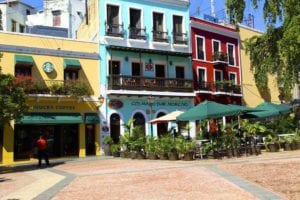
This environmental diversity is echoed throughout Puerto Rico, a destination which many people visit in search of sun, sand and sipping rum drinks. But as anyone familiar with the island knows, there’s more – a lot more – to enjoy.
A virtual continent worth of variety is shoe-horned into an area smaller than Connecticut. You don’t have to travel far to find a virtual A-to-Z list of activities and attractions.
Begin with the multiplicity of landscapes. Palm-fringed beaches along the eastern shoreline give way to gentle hills. Then, the terrain rises to form two rugged mountain ranges that dominate the center of the island before falling into the rolling surf that laps beaches on the west.
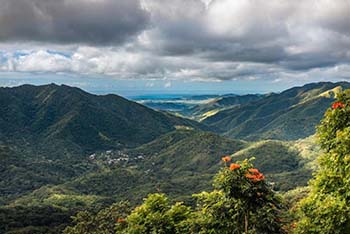
In stark contrast to this lush setting is the Guanica Dry Forest Reserve, the largest tract of tropical dry coastal forest in the world. More than 700 species of plants have adapted to this inhospitable desert setting, including 16 which exist nowhere else.
Archaeologists tell us that several Indian groups inhabited Puerto Rico beginning some 4,500 years ago. When Christopher Columbus landed there in 1493 and claimed it for Spain, he encountered the Taino (pronounced Tie-EE-no) Indians. Their name meant “friendship,” and they were peaceful people who spent their time farming and fishing.
Reminders of their society abound in place names throughout the island, and also at the Tibes Indigenous Ceremonial Center. This was a gathering place that included plazas, ball courts and burial grounds, all still visible today. Stones that were placed to create a kind of astronomical observatory still are laid out in precise lines, and some of them reveal petroglyph etchings.
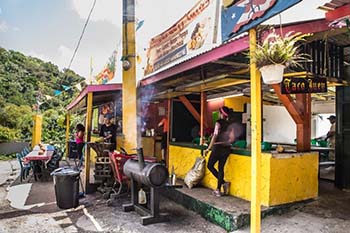
Traces of Africa also persist, in favorite foods and other ways. Spanish explorers brought slaves from Africa to help with their search for gold. Later, they planted and harvested sugar cane, which at one time was the most important cash crop on the island.
San Juan, the capital, melds the bustle of a large American city with the grace of its Spanish heritage, along with colorful Caribbean touches. It has its share – and more – of shops, restaurants, bars and night clubs. Yet its historic center continues to reflect 500 years of history in the narrow streets, imposing public buildings and pastel-painted houses.
Remnants of the city walls, 16th-century El Moro castle and 17th-century Fort San Cristobal were part of what was one of the most impregnable fortresses in the New World.
Sprinkled around the island outside of San Juan are towns that share such vestiges of their Spanish heritage as a central plaza often overlooked by a church. At the same time, each village has unique charms and attractions.
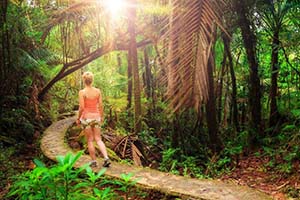
Mayaguez boasts a tropical botanical garden and Puerto Rico’s largest zoo. Rincon is perched on the western-most tip of the island where the mountains run down to the sea. The scenery is spectacular, the nearby beaches are beautiful and surfers find plenty of large waves to ride.
A sometimes overlooked attraction is the collection of outstanding museums around the island. A personal favorite among the more than three dozen in San Juan is the Museo de Arte de Puerto Rico. It boasts one of the largest collections in the Caribbean and is housed in a magnificent neoclassical building that itself is worth a look-see.
Highlights in Ponce include the Museo de la Arte, an important center of European art from the Renaissance to the 19th century, and the eclectic Museo de la Historia, which traces the city’s history from the time of the Taino Indians to today.
Mealtimes provide added opportunities to experience the intriguing cultural mix that is a vital part of island life. I introduced my taste buds to treats that combine flavors of a variety of cuisines, including Taino (cassava, yucca and other root vegetables), Spanish specialties (tapas, ham croquettes) and local favorites like octopus ceviche, tostones (fried plantain slices) and mofongo (mashed plantain stuffed with chicken, shrimp or other fillings).
Even this description of Puerto Rico’s many appeals doesn’t come close to exhausting the possibilities. A brief list suggests the range of other choices.
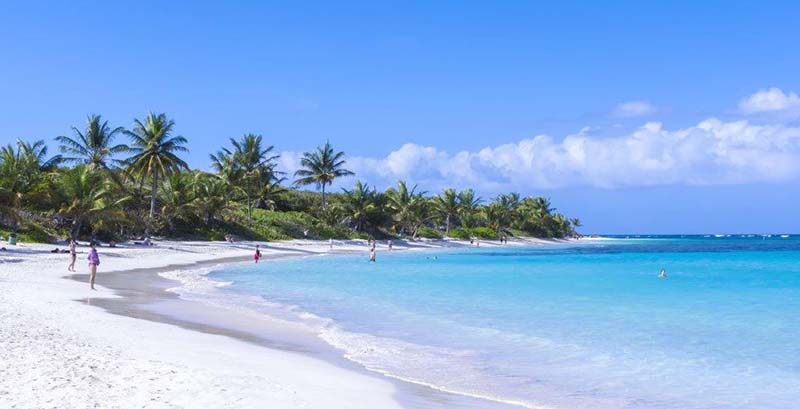
If You Go
For more information call (800) 866-7827 or log onto seepuertorico.com.
Photo credits: (top to bottom)
Old San Juan: Dreamstime.com/Sebastian Chauvel
Valley in Puerto Rico: Dreamstime.com/Shutterdo
Food stand: Dreamstime.com/Littleny
El Yunque: Dreamstime.com/Dennis Van De Water
Puerto Rico Beach: Dreamstime.com/Czubar

After gallivanting throughout the United States and to more than 75 other countries around the world, and writing about what he sees, does and learns, Victor Block retains the travel bug. He firmly believes that travel is the best possible education, and claims he still has a lot to learn. He loves to explore new destinations and cultures, and his stories about them have won a number of writing awards.



